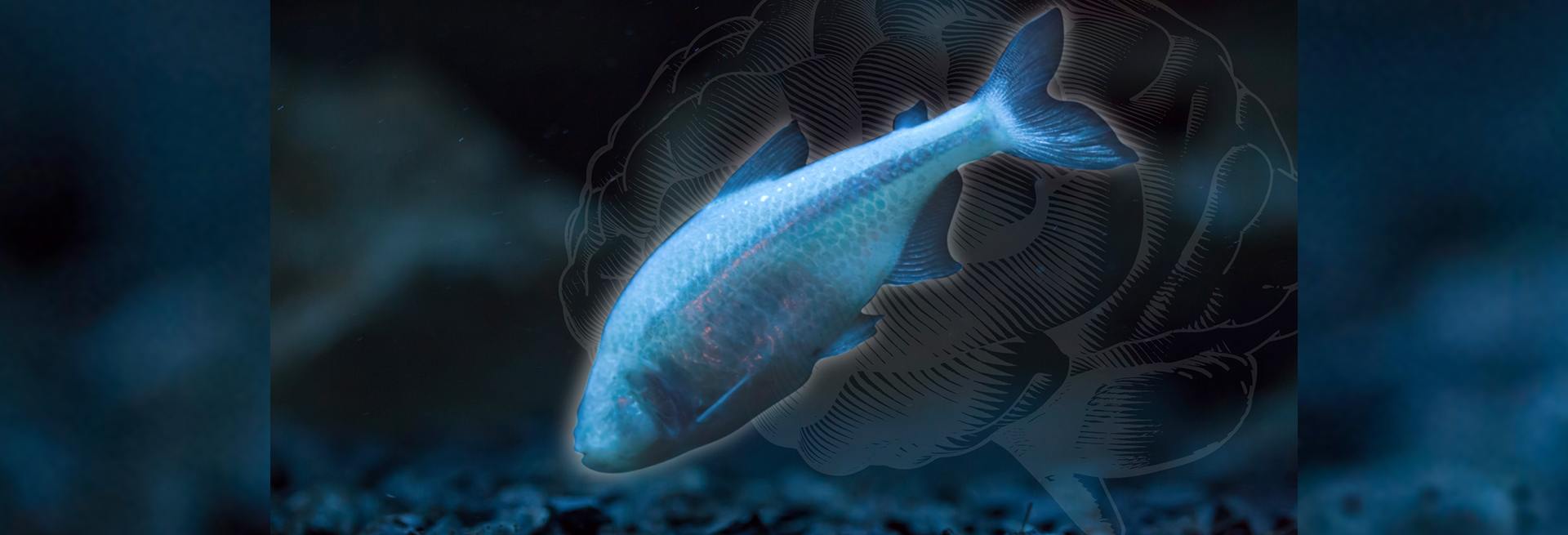After dwelling for millennia in pitch black pools largely cut off from the outside world, Mexican cavefish have taken on some strange behavior. Not only have they lost their eyesight and turned pink, the fish sleep, fight, and get stressed much less than their river dwelling counterparts.
Scientists at FAU — which has emerged as a central player in the field of cavefish research — want to know how evolution has tweaked their biology.
“People have been studying behavior in these fish for decades, but we know very little about the brain anatomy and the neural activity associated with the changes in cave populations,” said Alex Keene, Ph.D., an associate professor in the Charles E. Schmidt College of Science. Keene works closely with two other cavefish researchers at the university, Johanna Kowalko, Ph.D., and Erik Duboué, Ph.D., both assistant professors of biology in the Harriet L. Wilkes Honors College. No other institution is home to three labs that focus on the fish, although scientific interest in them is growing, Keene said.
Cave and river fish belong to the same species, Astyanax mexicanus, making the differences between the two all the more striking. Earlier work by Keene and Duboué has shown that cavefish sleep, on average, 80% less than river fish, a discrepancy Keene continues to explore in the hopes of gleaning insights into human insomnia.
Meanwhile, Duboué, is studying how the fish react — or don’t — to stressful stimuli. Cavefish, it turns out, get much less freaked out when, for example, he puts them into a new tank.
Cavefish also lead minimal social lives, appearing to pay little attention to each other. Kowalko is investigating how they differ from river fish, which swim in coordinated groups, called schools, and sometimes chase and attack one another.
The trio has developed a number of tools, including genetically engineered fish, to explore the underpinnings of these behaviors.
“I have always been interested in how the brain works, and in order to see that you have to look at neurons’ activity in the entire brain in a living, breathing, behaving animal," Duboué said.
By altering a fish so its neurons express a protein that fluoresces when they become active, Duboué can determine how each neuron responds when the fish is stressed or just going about life as normal.
In a complimentary effort, Duboué and Keene have been mapping the fish’ brain anatomy. To create what are known as brain atlases, the researchers use microscope images to reconstruct a single brain in three dimensions. Then, with software, they average together individual brains, creating a composite.
In an effort described recently in the journal Scientific Advances, Duboué, Keene and Kowalko made four atlases, one for young river fish, the others for three populations of cavefish that evolved separately. The team then compared the volume of 18 regions of the fishes’ brains and mapped neuronal activity while the fish were sleeping and getting food. These comparisons uncovered subtle differences between not only cave and river fish, but also among the groups of cavefish.
Other studies from the researchers’ labs are also turning up evidence of neural variation. Duboué, for instance, has found cavefish have higher levels of molecules known to dampen the stress response.
Of course, there’s still a lot to do. With new grant funding, for example, Kowalko’s lab is beginning to catalog the quarrelsome behavior of river fish, a necessary step before comparing them with their more laidback relatives.
“We know a decent amount about social behavior and aggression in other animals, but it’s not clear exactly what’s changed in cavefish to produce such vast differences,” she said.



